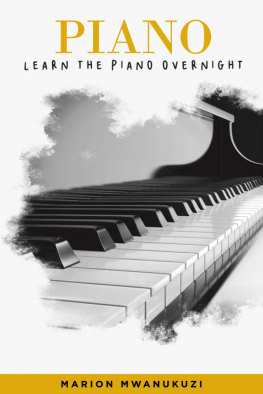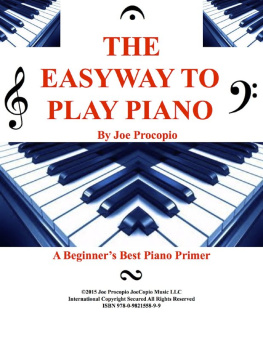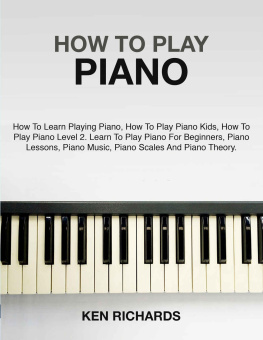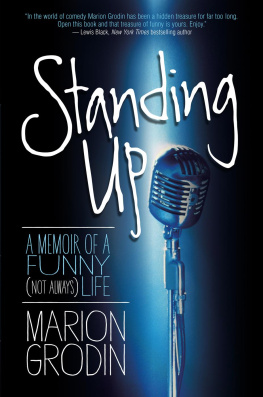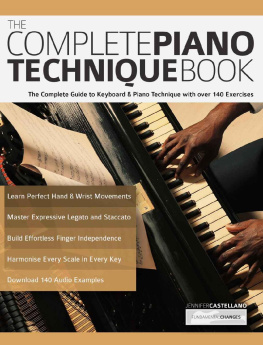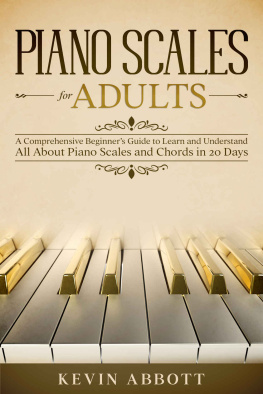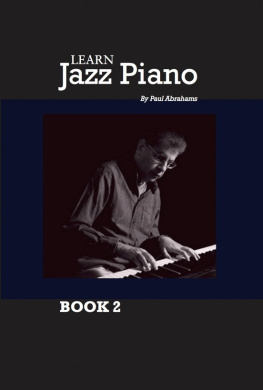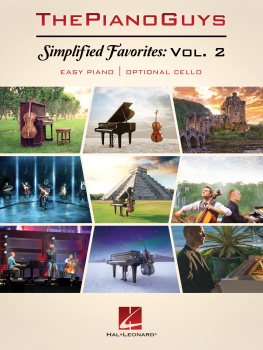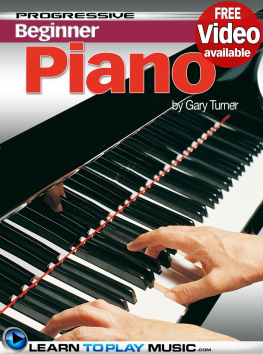Marion Mwanukuzi - Learn the Piano Overnight
Here you can read online Marion Mwanukuzi - Learn the Piano Overnight full text of the book (entire story) in english for free. Download pdf and epub, get meaning, cover and reviews about this ebook. genre: Children. Description of the work, (preface) as well as reviews are available. Best literature library LitArk.com created for fans of good reading and offers a wide selection of genres:
Romance novel
Science fiction
Adventure
Detective
Science
History
Home and family
Prose
Art
Politics
Computer
Non-fiction
Religion
Business
Children
Humor
Choose a favorite category and find really read worthwhile books. Enjoy immersion in the world of imagination, feel the emotions of the characters or learn something new for yourself, make an fascinating discovery.
- Book:Learn the Piano Overnight
- Author:
- Genre:
- Rating:5 / 5
- Favourites:Add to favourites
- Your mark:
- 100
- 1
- 2
- 3
- 4
- 5
Learn the Piano Overnight: summary, description and annotation
We offer to read an annotation, description, summary or preface (depends on what the author of the book "Learn the Piano Overnight" wrote himself). If you haven't found the necessary information about the book — write in the comments, we will try to find it.
Learn the Piano Overnight — read online for free the complete book (whole text) full work
Below is the text of the book, divided by pages. System saving the place of the last page read, allows you to conveniently read the book "Learn the Piano Overnight" online for free, without having to search again every time where you left off. Put a bookmark, and you can go to the page where you finished reading at any time.
Font size:
Interval:
Bookmark:
I always like to stress toall of my students that playing music is not nearly as difficult asit seems. It does not take a genius to be a good musician.You can learn todo amazing things with your hands. It just takes thedesire/motivation to do so.and dont forget practice! Practicemakes perfect. Think about it, to excel at anyprofession/activity/hobby/sport/etc. it takes a lot of practice.For example, NFL Football stars practice like CRAZY every day ofthe week for hours to maintain their ability

OK, back to my original point. Did you realize what I said? Thereare ONLY 12 notes in existence! This makes music a lot easier thanyou though eh? EVERY SONG YOUVE EVER HEARD WAS MADE UP OF ACOMBINATION OF THESE 12 NOTES. No matter how complicated of aMozart song it is, there are only 12 notes to choosefrom:
The Sharps (#s) are theblack keys. The very next key to the RIGHTof any given key is the Sharp of that note.
On the piano, the distancebetween any note to the very next note (whether the next note is ablack key OR white) is called a half-step. So, from A to A#is a half-step. From A# to B is also a half step. NOW NOTICE B and C. There are no sharps in between them but they are stillconsidered a Half-Step. This is very important to understandbecause a lot of people think that if you go a half-step from oneletter the next note will be that letter Sharp. This is true forMOST notes except for B to C and E to F. If you look at thepiano above, youll see that E goes right to F and they are bothwhite keys and the same for B to C. These are STILL HALF-STEPS.There is no B# because B# would just be called C. An E#would just be called F. These are the TWO exceptions.
WholeStep . Remember those exceptions now! Thedifference from B to C is NOT a whole step. Remember, from B to C is aHALF-STEP because they are right next to each other. So, from Bto C # would be aWHOLE-STEP. Same goes for E to F (half step). From E toF # would be theWHOLE STEP. The reason why people make this mistake is because fromevery other white key to the next white key is a WHOLE STEP.(Because there is a black key in between which is the halfstep).
This is a very important fundamental of music. This Scalemakes up the sounds Do-Re-Mi-Fa-So-La-Ti-Do. Its called theMajor Scale and it is one of the MAIN modes of music. There aremajor and minor. The major scale sounds happier while theminor scales sound sad.
NOW PAY ATTENTION: On the FOURTH Note which is F, you will crossyour thumb underneath your middle finger (finger #3) and play theF with your THUMB! This allows you to finish the rest of thescale with the rest of your hand. Fingers 1, 2, 3, 4, 5. So, incase this was confusing, the fingering for C. D. E, F, G, A, B, Cwould be fingers: 1, 2, 3, 1, 2, 3, 4, 5.
So, the scale wouldbe C, D, E, F, G, A, B, C, B, A, G, F, E, D, C.
Fingers are: 1, 2, 3, 1, 2, 3, 4, 5 ,4, 3, 2, 1, 3, 2, 1.
The Bold letters and numbers are goingup the scale which is left to right. Then on the way back downthe scale, (not bold) it is right to left.
Font size:
Interval:
Bookmark:
Similar books «Learn the Piano Overnight»
Look at similar books to Learn the Piano Overnight. We have selected literature similar in name and meaning in the hope of providing readers with more options to find new, interesting, not yet read works.
Discussion, reviews of the book Learn the Piano Overnight and just readers' own opinions. Leave your comments, write what you think about the work, its meaning or the main characters. Specify what exactly you liked and what you didn't like, and why you think so.

